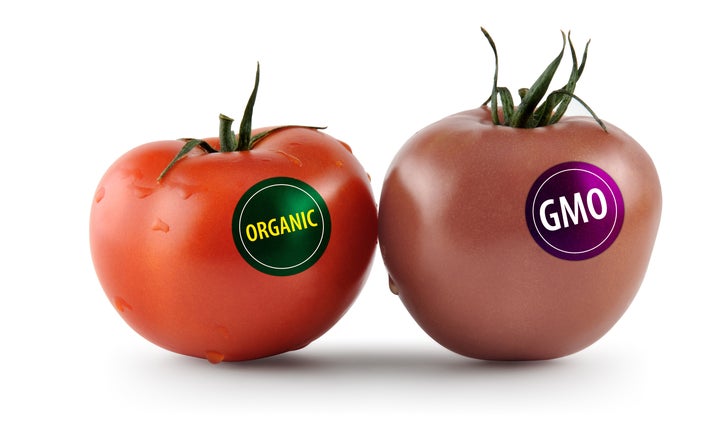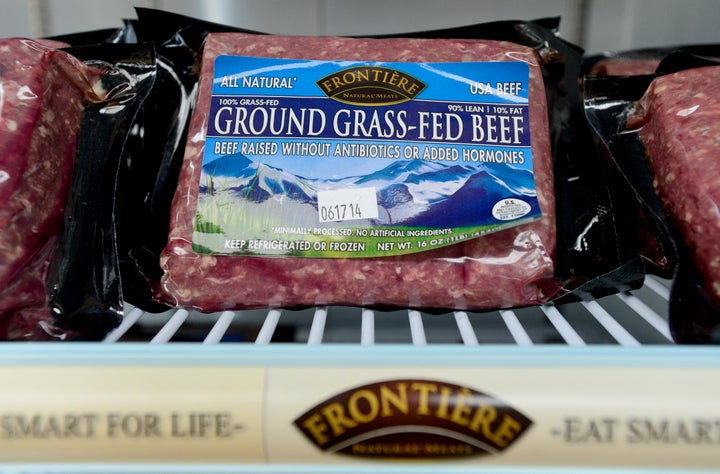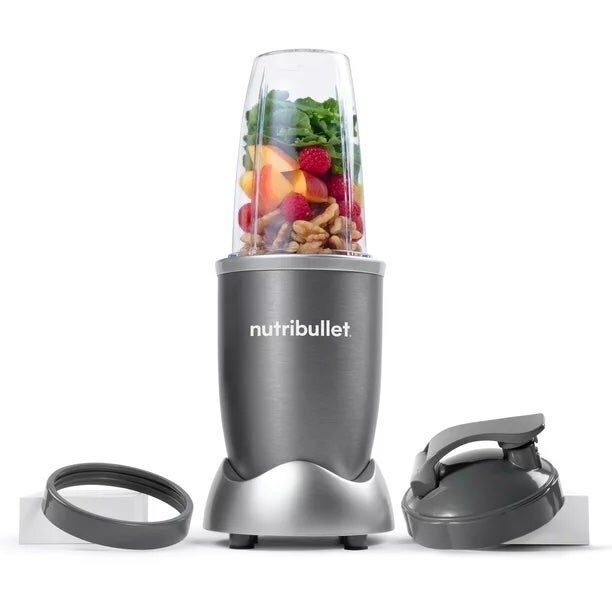
You have likely seen buzzwords like “natural,” “sustainable,” and “cage-free” on food labels at your supermarket, but don’t necessarily know what they mean. If you’ve ever questioned whether they’re regulated terms or just marketing jargon, you’re on to something.
Food brands are aware that shoppers want to make informed purchases, and sometimes they take advantage of it.
“Food labeling is important because consumers have a lot of power in what we buy; buying is an endorsement and vote of confidence,” said Melissa Nelson, a professor of Indigenous sustainability at Arizona State University. “The hard part is that the labeling is not standardized, and people often don’t know exactly what they mean.”
One thing to keep in mind: Providing standard definitions and more regulation for food terminology may make things easier for consumers, but more rules and regulations usually mean farmers must pay for certifications.
Here are some common terms found on food packaging, and what they really do (or don’t) mean.
Certified Organic: Regulated By USDA
“Organic” is a term most people are familiar with, but they may not be aware that farms and food producers can’t claim the label unless they have been certified.
“‘Certified organic’ was established in the Organic Foods Production Act of 1990 and is defined by federal law,” said Lena Brook, the acting director of food and agriculture at a nonprofit advocacy group called the Natural Resources Defense Council.
Farmers and producers must adhere to set guidelines to become certified and maintain the certification.
“Organic farms and ranches comply with federal regulations that prohibit the use of synthetic pesticides and fertilizers, and require the use of a combination of practices like composting ... and crop rotation that build healthy soils,” Brook said.
“Whether a farm is large or small, there is a baseline of practices that are required to earn and sustain organic certification, like beginning with a three-year transition period and partaking in annual inspections.”
Interested consumers should look for the U.S. Department of Agriculture’s certified organic seal. According to the agency, anyone who sells a product as “organic” without adhering to USDA requirements risks a financial penalty.
However, some small farmers may grow organically but aren’t certified due to the high costs and time commitment.
“The road to ‘organic,’ especially for smaller-sized producers, comes with significant barriers and financial risks,” Brook said.
Cage-Free: Regulated By USDA
With eggs, there are different ways that hens can be raised. “Cage-free” sounds great, right? But the reality may not be what you assume.
“Cage-free eggs are from hens who are free to move around inside a large confinement house, where there could be 10,000 to 20,000 hens in one building,” said Craig Schmidt, a regenerative farmer and the owner of Shaded Grove Farm Market in Mississippi.
“They are raised with artificial lighting to manipulate the hens into producing the maximum number of eggs possible, as chickens are daylight-sensitive by nature.”

Free-Range: Regulated By USDA
The phrase “free-range eggs” conjures up images of hens roaming around as they please, but that may not be entirely accurate.
“[The term is] quite elusive and could vary, but essentially the laying hens have access to the outdoors via small doors in the barn where they can go outside if they choose to,” Schmidt said.
“[‘Free-range’] is still a misnomer, as the hens are raised in a large, semiconfinement house with small access doors where the chickens can conceivably go outdoors,” he added. “The problem is the barns are stationary and outdoor space is limited.”
If you have to decide between the two options, free-range eggs are a better choice than cage-free ones, Schmidt argued.
Genetically Modified, Genetically Engineered And Biologically Engineered: Regulated By FDA, USDA And EPA
There are multiple terms used for food that has been manipulated and modified, including “genetically modified organisms,” “genetically engineered” and “biologically engineered.” The Food and Drug Administration, USDA and Environmental Protection Agency work together to regulate and permit such foods in the U.S.
“Many foods — plants, animals, oils — that humans consume are genetically engineered and modified, meaning that their DNA has been humanly manipulated and altered,” Nelson said, noting that this can help do things like “make tomatoes ripen faster, make canola resistant to herbicides, or make salmon grow larger.”
The process can entail “inserting genes from a different species, often viruses and bacteria,” into another species, Nelson said.
Consumers may not always know if their food is genetically modified since disclosure is not always required. However, you can check the USDA’s list of bioengineered food, which is a more specific category. As of Jan. 1, 2022, the department’s National Bioengineered Food Disclosure Standard requires food manufacturers to disclose if bioengineered ingredients have been used.
Non-GMO: Regulated By A Nonprofit
Wondering if there’s a way to know if GMOs are not in your food? The nonprofit Non-GMO Project provides verification for companies that make products without GMOs.
“People have the right to know what foods they are consuming, especially when they have been genetically manipulated by humans in laboratories,” Nelson said, adding that this is “often for experimental or economic reasons” rather than “human health reasons.”
“You see that [non-GMO] label on a lot of products, which indicates that food companies understand that consumers are actively looking to avoid products with ingredients that are derived from genetic engineering techniques,” said Charles Rosen, the founder and CEO of Ironbound Farm in New Jersey.
Although the final product is free of GMOs, Rosen said that the labeling doesn’t encompass the entire origins of the food.
“The label does not reflect the farming system in which those ingredients were grown or the chemicals used in the processing,” he said. “So, while important, the label only tells part of the story.”
Local And Locally Sourced: Regulated By USDA, But Not Nationally
The terms “local” and “locally sourced” get thrown around a lot, but the meanings can change from one label to another.
“‘Locally sourced’ typically means that the food was produced within a certain radius of the store/institution/business where it is being sold or served,” Brook said.
For farming, some individual USDA programs have defined perimeters. The department doesn’t have a national definition for “local,” but in some individual USDA programs, it means a maximum of 400 miles between farmers and consumers.
Many people associate “local” with something that it may not be.
“People tend to conflate ‘local’ with ‘sustainable’ or ‘organic,’ and also assume that if something is ‘locally sourced,’ it inherently comes from a small, family-owned farm,” Brook said. “None of that is necessarily true.”
Natural And 100% Natural: Regulated By USDA For Meat And Poultry
“Natural” and “100% natural” have made their way into ingredient lists as a way to promote a product as healthy.
“‘Natural’ is not a meaningful marketing term because it can be so widely defined and does not differentiate between ingredients derived from chemical-intensive agriculture versus those grown via eco-friendly agriculture,” Rosen said.
“People make many assumptions about ‘natural’ and even believe it means the same as ‘certified organic,’” Brook said. “In fact, ‘natural’ is defined by the USDA for meat and poultry only, indicating that they are minimally processed and don’t contain artificial ingredients.”
Pasture-Raised: Regulated By USDA
“‘Pasture-raised’ describes a philosophy of raising animals — throughout their entire life span — in a way that respects an animal’s right to act out its inherent desire to graze, forage, peck, scratch, wallow, etc.,” Rosen said.
“Pasture-raised animals actually spend their entire lives outdoors on pasture or woodlands,” Schmidt added.
Raising animals on pasture is typically better for animals’ quality of life and for the environment.
“Allowing animals to do that, under skilled management, provides considerable ecosystem services to a farm — fertility, pest management, mowing, pasture improvement — as well as an improved nutritional profile to the meat and eggs from that farm,” Schmidt said.
Unfortunately, sometimes meat and eggs are incorrectly labeled as “pasture-raised.”
“Overstocking a pasture with livestock or poultry, and then feeding them on a diet that is primarily grain and hay, is not ‘pasture-raised.’ But it can still be marketed as such,” said Rosen.

Grass-Fed And -Raised: Unregulated
Cows naturally eat grass. But most cattle are given a corn diet to quickly fatten them up so they can be sold for beef.
“Truly grass-fed and grass-finished beef is strictly a grass and grass/hay diet,” Schmidt said.
However, this label isn’t regulated, so it’s possible for a cow to be raised on pasture but then given a diet of corn in the final months of its life.
“Many producers will raise their livestock on pasture for most of the animal’s life, but then grain finishes the beef the last 90 to 120 days of its life,” Schmidt said. “This is sometimes labeled as ‘grass-raised.’”
Want to know if the beef is truly grass-fed? You’ll need to know the rancher.
“The best and really only way to really know how the beef you are eating has been raised is to develop a relationship with the producer or at least do some research into the farm or the ranch where your beef is being produced,” Schmidt said.
Here’s a handy guide for what you can look for when shopping.
Regenerative Farming And Ranching: Unregulated
Regenerative farming isn’t a new practice; it’s that way that many ranchers and farmers worked the land before pesticides and chemicals arrived on the market.
“In regenerative agriculture, the focus is on building and restoring soil health and function, which have been severely degraded over the last 80 to 100 years with the advent of commercially made fertilizers and the myriad chemicals used to kill weeds and pests,” Schmidt said.
“Instead of plowing and tilling the soil, regenerative farmers are no-tilling their cash crops followed by cover crops, which help prevent soil erosion as well as build nutrients in the soil and sequester carbon from the atmosphere.”
Regenerative farmers don’t use chemical sprays. Instead, they rely on crop rotation or moving livestock from one pasture to another each day.
“This is essential to building healthy soils, controlling unwanted species of forage, and is very beneficial to the health of the livestock,” Schmidt said.
However, anyone can claim they practice regenerative farming since there isn’t any regulation.
“The term isn’t regulated and is being widely adopted by [the] industry, where it is used to describe practices such as planting a cover crop, killing it with [the herbicide] glyphosate, and then planting into it,” Rosen said.
Sustainable: Unregulated
“Sustainable” is a word that has become trendy and overused. People and companies have their own understanding and ways of defining what it means.
“Generally speaking, this term has come to describe processes and actions through which humankind avoids the depletion of natural resources, in order to keep an ecological balance that doesn’t allow the quality of life of modern societies to decrease,” said Holly Conn, the executive director of the nonprofit Mountain Roots Food Project in Colorado.
“’Sustain’ means ‘give support to,’ ‘to hold up,’ ‘to bear’ or to ‘keep up.’ Many of the systems — food, political, social, economic, etc. ― we have around the globe are failing.”
